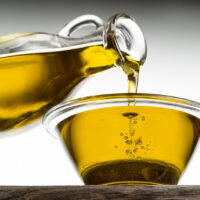Home remedies to get rid of a boil
A boil can be annoying for most of us, especially when it comes in the form of a pimple. Boils are usually dealt with by getting the pus out of the lump or taking some antibiotics. The main reason for the popping up of a boil is the heat inside your body.

Boils take a few days to come and go; they can go away without any treatment as well. Most people get rid of boils with the help of some topical ointment. You can try some home remedies that can work better than ointments in some cases.
Here are some home remedies on how to get rid of a boil:
- Garlic : Garlic has very high deposits of sulfur compounds such as allicin and ajoene; these sulfur compounds are helpful in curing boils. Along with the compounds, garlic also has anti-inflammatory, anti-bacterial and anti-viral properties which makes it one of the best home remedies for treating boils. It can also be helpful if you increase the garlic intake in your diet. Apply it as a paste on your boil, add olive oil to improve the potency. Leave it for a couple of hours and then wash it off.
- Warm water compress : Warm water allows the pus to ooze out sooner than it ideally does. The warm water free the blood vessels around the boil, helping with the pain that comes along with the boils. You can soak a cotton cloth in warm water and apply it directly on the boil for best results. This basic idea is to get the pus out of the boil. The warmth of the water makes the boil white in color, and that means it can burst anytime, letting the pus out.
- Neem : Neem has anti-biotic and anti-fungal properties; it is also an ancient ayurvedic treatment for most of the skin ailments faced by us. Neem oil is one of the easiest ways of getting rid of boils. Apply it on the boil, and the surrounding area without any worries, it has no side effects. You can also make a paste with neem leaves and apply it 3-4 times a day for best results.
- Tea tree oil : Tea tree oil is extracted from the tea tree, Melaleuca Alternifolia. It contains antibacterial, antiseptic, antifungal and antimicrobial properties that allow the boil to heal faster. Use a cotton ball with a few drops of tea tree oil and apply it on the boil directly for best results.
Disclaimer:
The content provided on our blog site traverses numerous categories, offering readers valuable and practical information. Readers can use the editorial team’s research and data to gain more insights into their topics of interest. However, they are requested not to treat the articles as conclusive. The website team cannot be held responsible for differences in data or inaccuracies found across other platforms. Please also note that the site might also miss out on various schemes and offers available that the readers may find more beneficial than the ones we cover.











